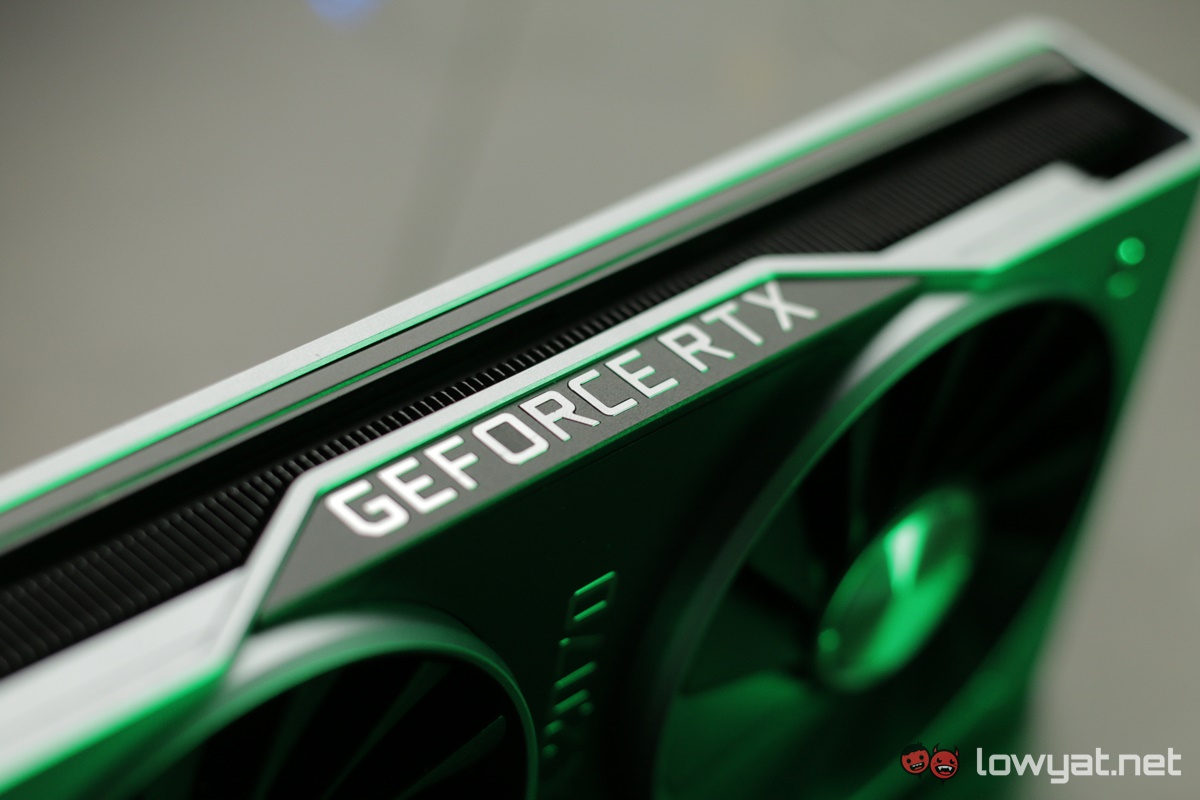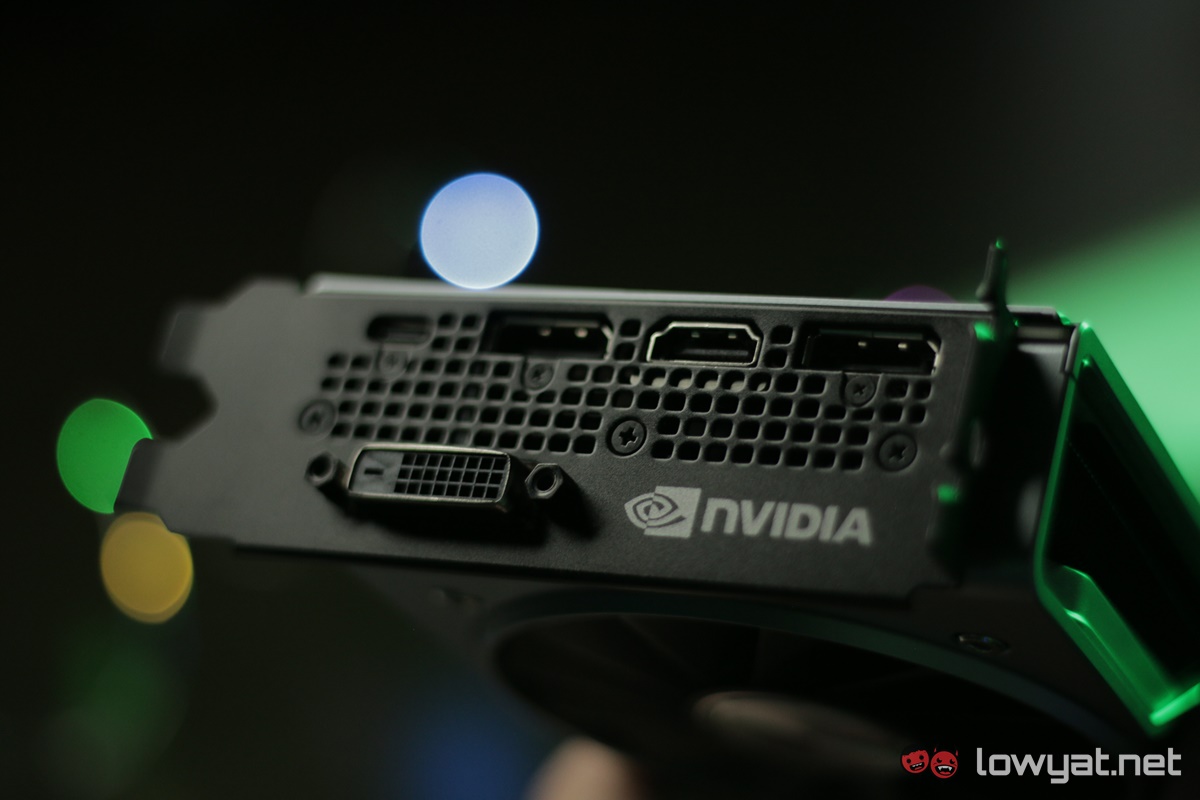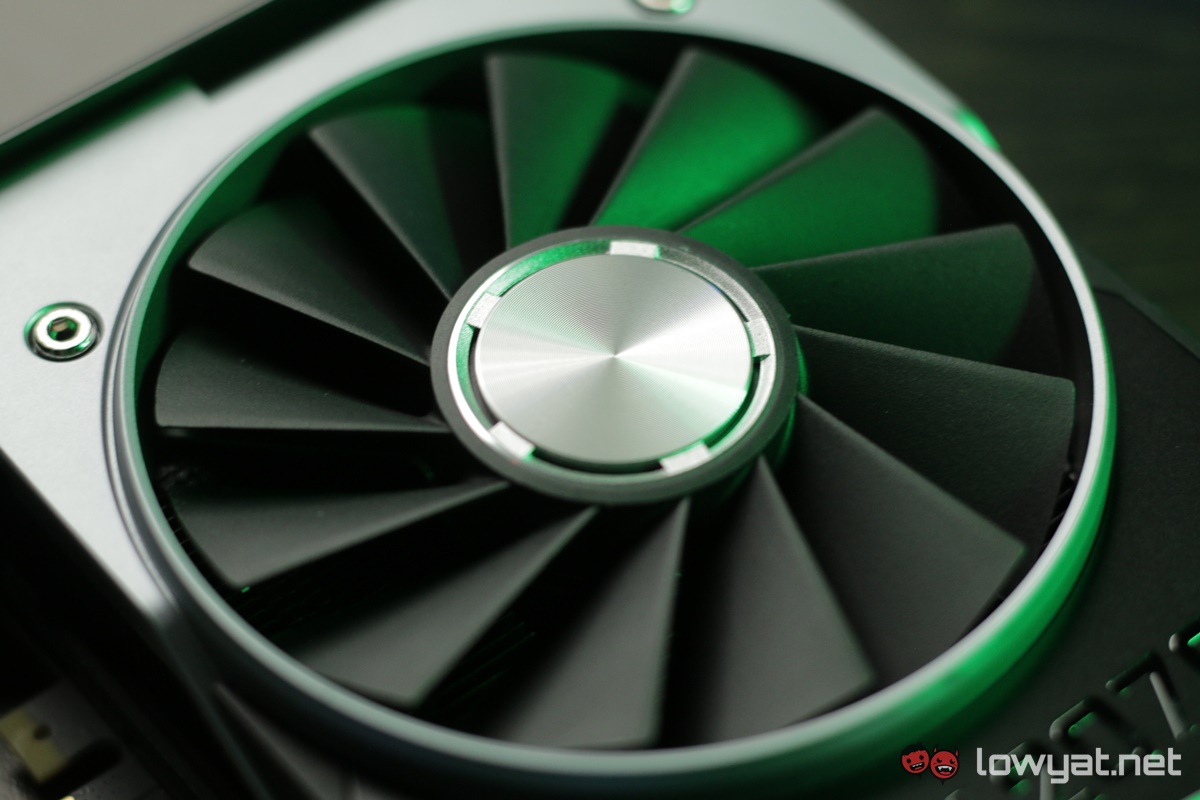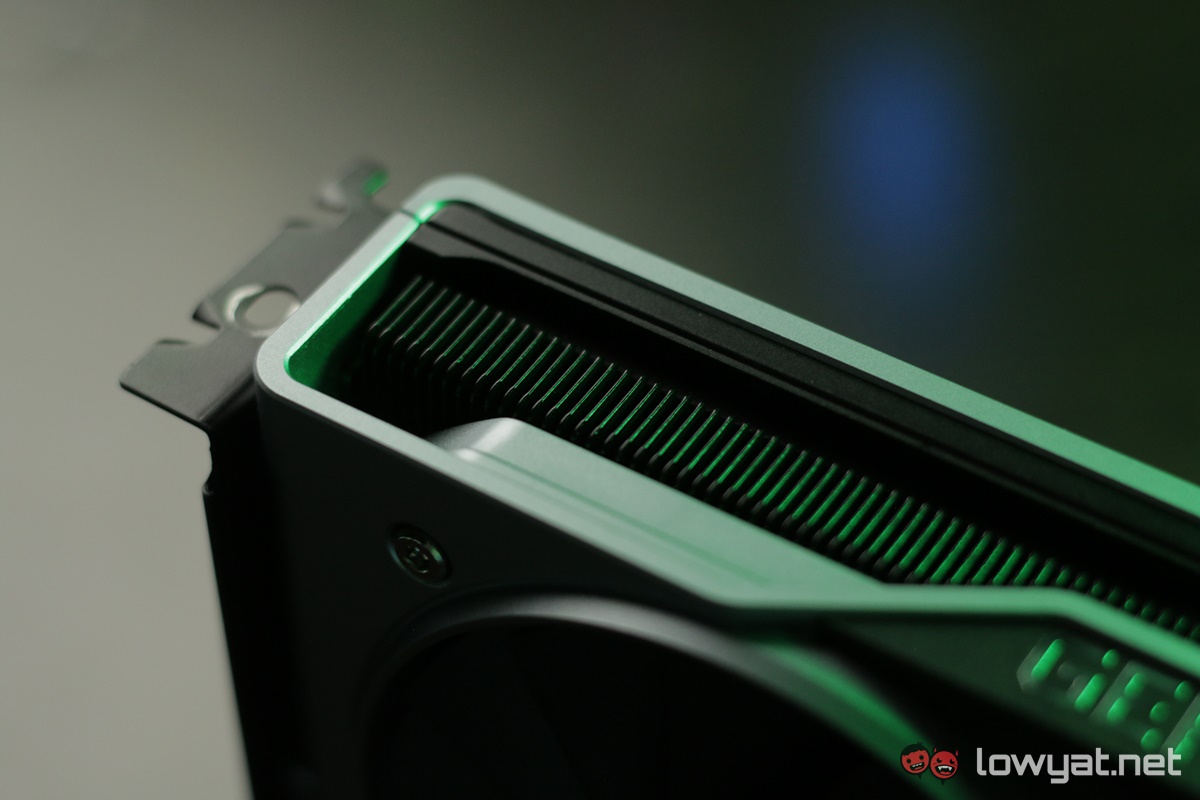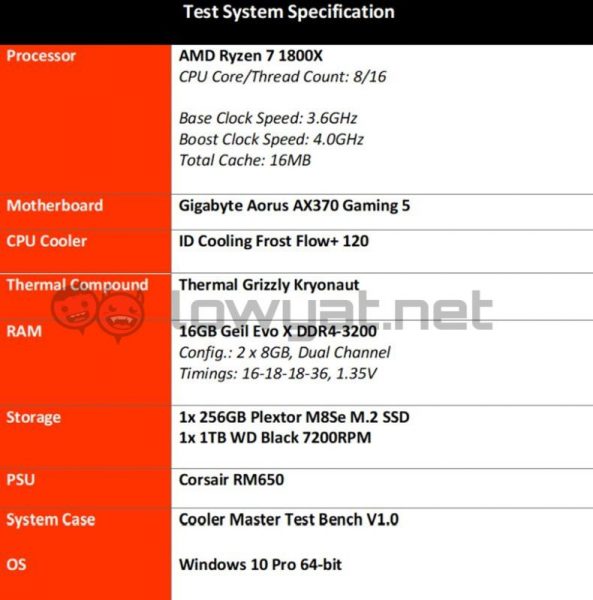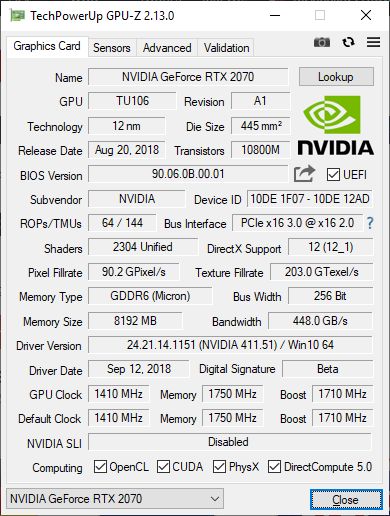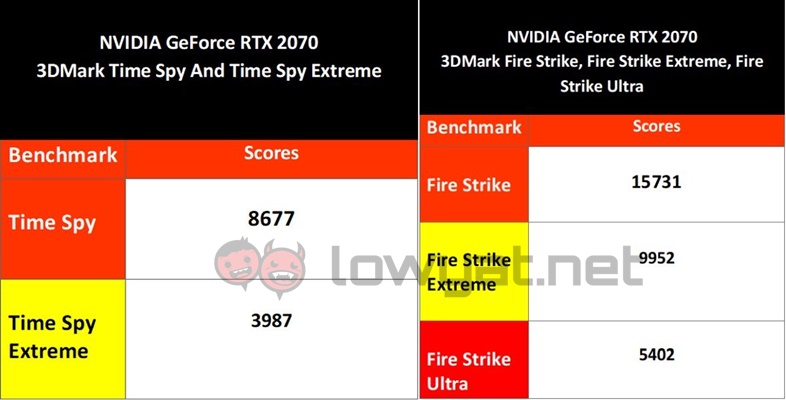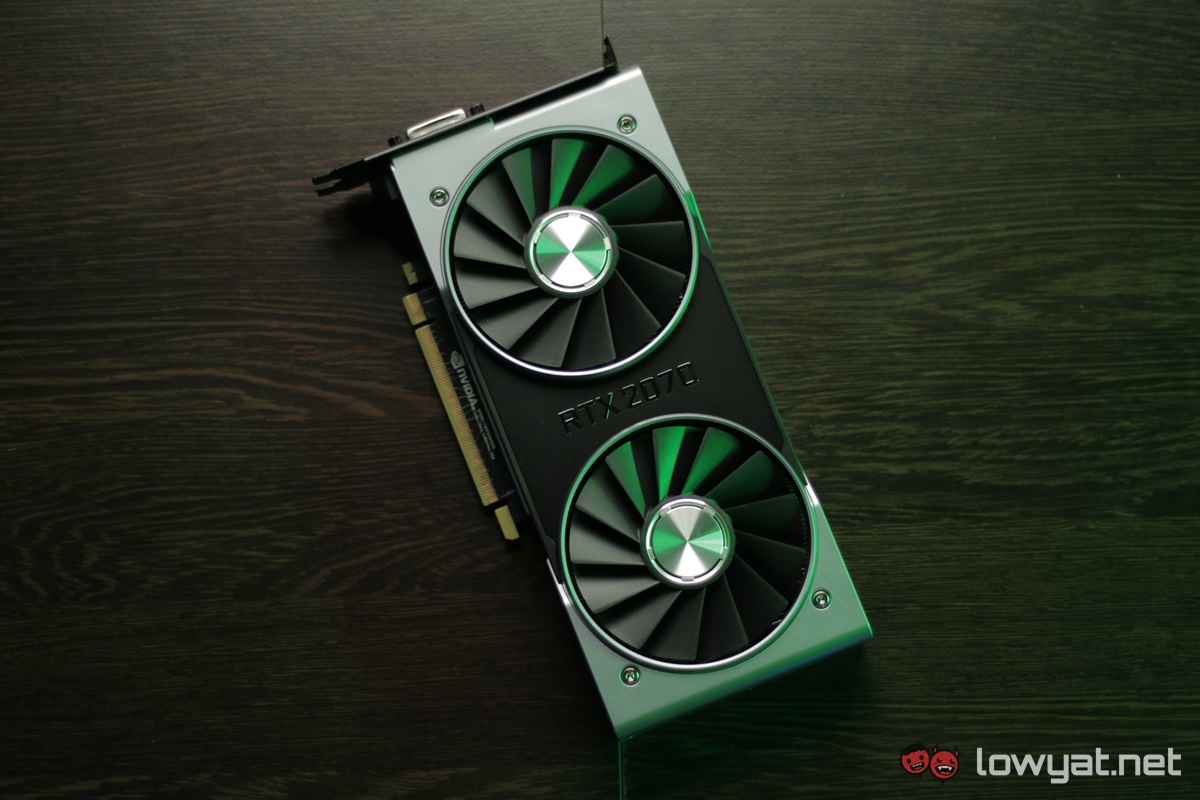I’ll start by addressing the overall specifications of the card. Unlike the RTX 2080 and RTX 2080 Ti, the RTX 2070’s Turing GPU is based on a lower tier TU106 die lithography. Like the RTX 2080, however, the card houses a healthy 8GB of GDDR6 memory. Running at 14Gbps and spread across 256-bit memory bus. Additionally, the card comes with 2304 CUDA cores, 46 Ray-tracing (RT) Cores, and 288 Tensor Cores.
Of course, RTX 2070 isn’t just any mid-range graphics card. Like its brethren, the card can take full advantage of NVIDIA’s new RTX technology. Despite the fact that there are currently no available game titles that have access to that technology. That, and the fact that Microsoft’s DXR update is still in a quandary. On another note, the RTX 2070 is the only card of the current range that features a dual-link DVI port. The presence of the DVI port also means that the card is limited to just two DisplayPort outputs, as opposed to the three ports both the RTX 2080 and RTX 2080 Ti get. Apart from the DVI port, the card has two DisplayPort 1.4 outputs, 1 HDMI 2.0b output, and a USB Type-C for DisplayLink.
The RTX 2070 is the most power efficient of the lot as well, with a TDP of just 185W (175W for reference). Reflecting this power efficiency, the card’s official product page lists down a system with a 550W PSU. On that note, the RTX 2070 only requires a single 8-pin PCIe power port in order to run. Aesthetically, the card bears the same dual-fan cooling solution that NVIDIA has used across the board for all its current RTX series graphics card. Having said that, the RTX 2070 is physically smaller than the RTX 2080 and RTX 2080 Ti.
Unfortunately, the one feature lacking on the RTX 2070 is an NVLink bridge. That means, unlike the RTX 2080 series graphics cards, this card cannot be used in a multi-GPU configuration. It’s not surprising though, especially when you remember that the card has an SRP of US$499 (~RM2076) and is aimed specifically to gamers who aren’t looking to break the bank. But still wish to attain high frame rates at 1440p resolution. So then, how does the card perform? To find out, I used the following components to benchmark the card:
As per the status quo, the benchmark programs that I used to test the card was UL’s 3DMark. For this quick hands-on, I specifically benchmarked the card using Time Spy and Time Spy Extreme for the DirectX 12 API. Along with the Fire Strike trio of tests. Just as I did with the RTX 2080 Ti, I didn’t overclock in this particular instance, and simply tested the card right out of the box.
For real-time performance, the game I used was the new Shadow of the Tomb Raider, of which I ran in two display resolutions: Full HD and 1440p. From my observation, I was looking at an average difference of 10 fps and 17 fps between the two resolutions.
Once again, this test is merely a glimpse into the RTX 2070’s graphical prowess. There are still more tests to be done, and I’ll definitely be including additional benchmarks, as well as the card’s overclocking performance. I’ll also be testing more graphically intensive game titles to this 1440p card, so stay tuned.
